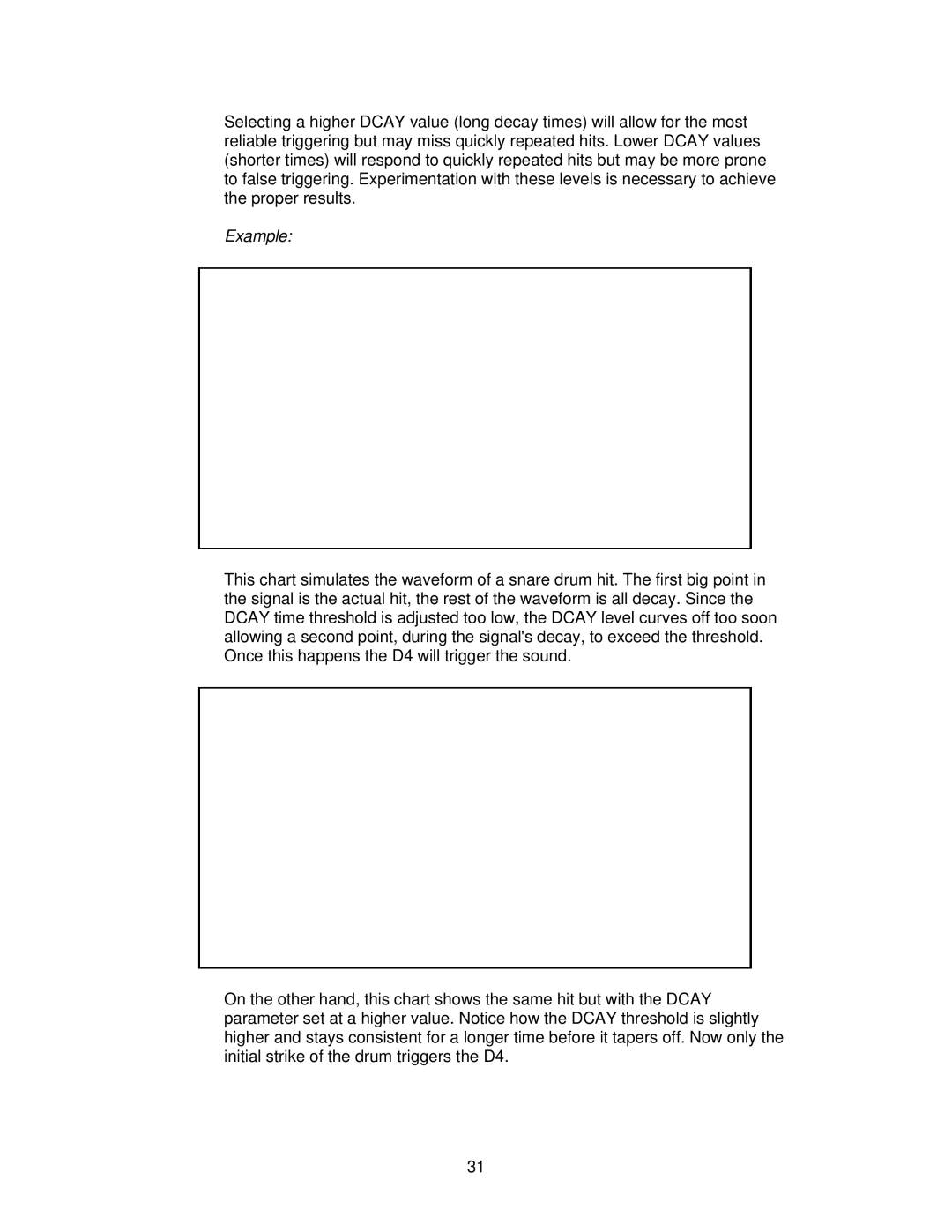
Selecting a higher DCAY value (long decay times) will allow for the most reliable triggering but may miss quickly repeated hits. Lower DCAY values (shorter times) will respond to quickly repeated hits but may be more prone to false triggering. Experimentation with these levels is necessary to achieve the proper results.
Example:
This chart simulates the waveform of a snare drum hit. The first big point in the signal is the actual hit, the rest of the waveform is all decay. Since the DCAY time threshold is adjusted too low, the DCAY level curves off too soon allowing a second point, during the signal's decay, to exceed the threshold. Once this happens the D4 will trigger the sound.
On the other hand, this chart shows the same hit but with the DCAY parameter set at a higher value. Notice how the DCAY threshold is slightly higher and stays consistent for a longer time before it tapers off. Now only the initial strike of the drum triggers the D4.
31
